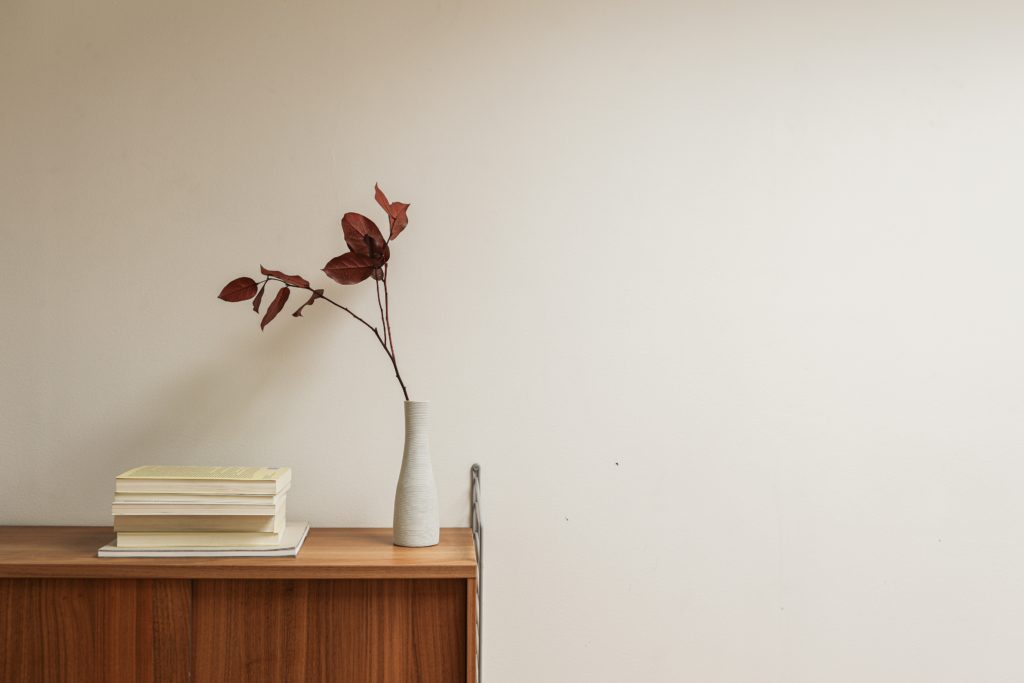Chiana Dickson
Warm minimalism has been sneaking its way into the interior design world over the last year or so, offering a cosier alternative to the minimalism of the last two decades.
Minimalist interior design found its footing in the 1960s, stemming from modernist art and a move away from the bold colours of the 1950s. Minimalism is a very deliberate design style. It offers clean lines, reductive architecture, and simplistic monochromatic schemes. There is also the chance that it can leave the space looking sparse and unlived in due to white colour drenching and few furniture pieces. Warm minimalism instead offers designers a softer, less rigid option that is more open to personalisation.
What is warm minimalism?
The clue is in the name – warm minimalism utilises warmer neutrals such as beiges, browns and terracottas opposed to stark whites and greys. create balance in the space with natural materials such as wood and jute, as well as weaved materials.
The most important element of warm minimalism is maintaining the minimalist feel. As Hélène Pinaud and Julien Schwartzman of Heju Studio state, minimalists “want to come back to a simplest and slowest life, be happy with little and find beauty in the simplest things”. Furniture and decor in warm minimalist spaces should still serve a purpose. Every piece should be functional (if possible) or you risk moving more into Bohemian territory.
Why is it so popular?
Minimalism has always been popular for its aesthetic appeal. It offers a sleek look and focuses on decluttering. This is great for those looking for less stress (which can promote better health). Warm minimalism, on the other hand, offers the ability to personalise the space and bring in features and textures that make the home feel cosier, whilst also staying clean and sleek.
Speaking on the transition from cool to warm design, Pinaud and Schwartzman told LivingEtc. “We are not afraid to incorporate artisanal, vintage and homemade objects and furniture in a quiet, natural palette […] We choose raw materials (like wood, stone, concrete) over imitations. These materials carry some imperfections, aren’t all identical and they will live over time.” Warm minimalism focuses on quality items over the number of items. Using natural materials is a great way to ensure your furniture will stand the test of time.
Using ethically sourced natural materials as well as reducing the consumption of trend pieces also supports a more environmentally conscious way of living. The UK generates 200 million tonnes of waste a year and furniture is becoming one of the fastest-growing landfill categories. Minimalist design combats this indirectly by centring on fewer non-functional items and instead ensuring high-quality items.
How to achieve the look
Decluttering is essential to the minimalist look. Try cutting down items by starting with those that you haven’t used in a while. Consider items functionality too! Make decor out of books, candles, decorative lamps, and meaningful art. Prioritise keeping items that serve a purpose. These can be the essentials as well as those meaningful items that you couldn’t live without. Being minimalist does not mean creating a home that lacks joy.
For the warm minimalism look, ditch stark whites and opt for muted neutrals. Use colours inspired by nature such as Dulux’s Sandstone, Ivory or Natural Yarn to emphasise the style’s roots in more natural forms of living. Using a light cream on the walls can help keep the room looking clean, whilst incorporating warmer tans and naturally stained woods in the decor helps to achieve a warm feeling.
Curating a cosy space is the goal of this style. Achieve this by integrating organic textures like jute and wicker in practical items. Rugs and storage baskets, for example, help to keep areas clean and clutter hidden away. Natural fibres such as wool, cotton and linen in soft furnishings maintain a restful feel. Similar materials can be used in furniture which, if you are going for a cosy atmosphere, should have curved silhouettes and fuller cushions to add a lush detail. When integrating metals, consider copper and brassy tones rather than the cooler silver to continue the warmth throughout the decor.
Finally, plants find a great home in warm minimalism. Warmer toned plant pots can tie in warm colours whilst providing functional decor. The greenery introduced into the space add a pop of colour as well as tying in other naturalistic elements in the space like raw-edged woods. Classic outlines can be created by adding tall Snake plants or broad Monstera’s, both of which are easy to care for even for the un-greenest of thumbs.
Featured image courtesy Cup of Couple of via Pexels. Image license found here. No changes were made to this image.

